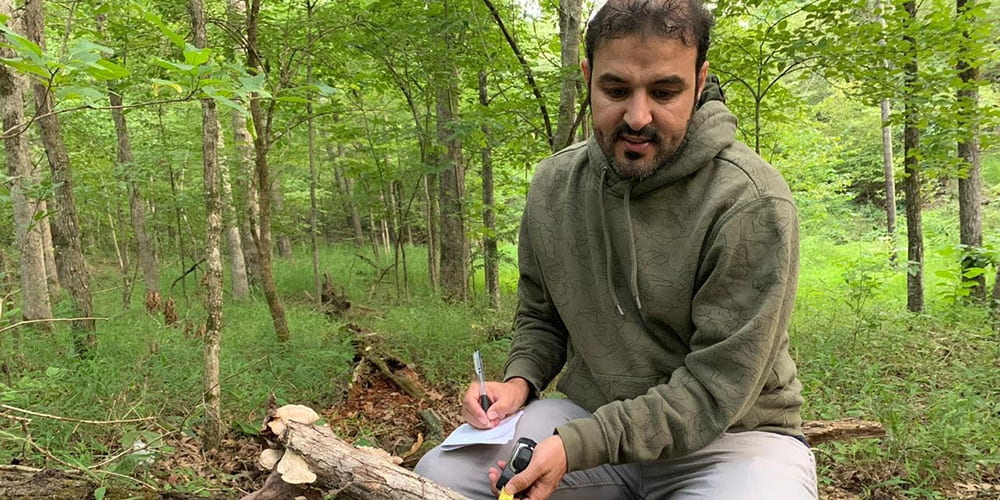Cataloging the Wood-Decay Fungi of Northwest Arkansas

Wood-decay fungi are common in the forests of Arkansas, but there has never been an effort to characterize the assemblage of species present. Nawaf Alshammari, a graduate student in the Department of Biological Sciences, has been studying these fungi for the past two years. His primary study areas are Pea Ridge National Military Park, Devil’s Den State Park and the Buffalo National River. In addition to collecting specimens of fungi that have developed under natural conditions in the field, he has developed a novel method of study that has not been used to any major extent in any previous study. This involves collecting pieces of coarse woody debris in the field, bringing these back to the laboratory, and placing this material in plastic incubation chambers. The chambers are kept moist, and over time the fruiting bodies of fungi appear. Interestingly, many of the fungi that show up in moist chamber cultures tend to be different species from those collected directly from the field.
Once the fruiting bodies have been collected, DNA is extracted from one or more representative specimens for each different species tentatively identified on the basis of morphological features. The DNA is amplified and then sequenced so that a definitive identification can be obtained. Altogether, 271 different species have been identified thus far. These belong to 119 different genera and 60 different taxonomic families. This total includes a number of species that appear to be new to science.
One aspect of the overall project has been to evaluate the impact of prescribed burning, a widely used forest management technique in northwest Arkansas, on wood-decay fungi. The data obtained clearly indicated that prescribed burning greatly reduces the number of fungi present at a particular locality. Moreover, these organisms appear to be almost completely eliminated from coarse woody debris actually charred by the fires associated with prescribed burning.
Nawaf’s major professor in the Department of Biological Sciences is Steve Stephenson.



You must be logged in to post a comment.